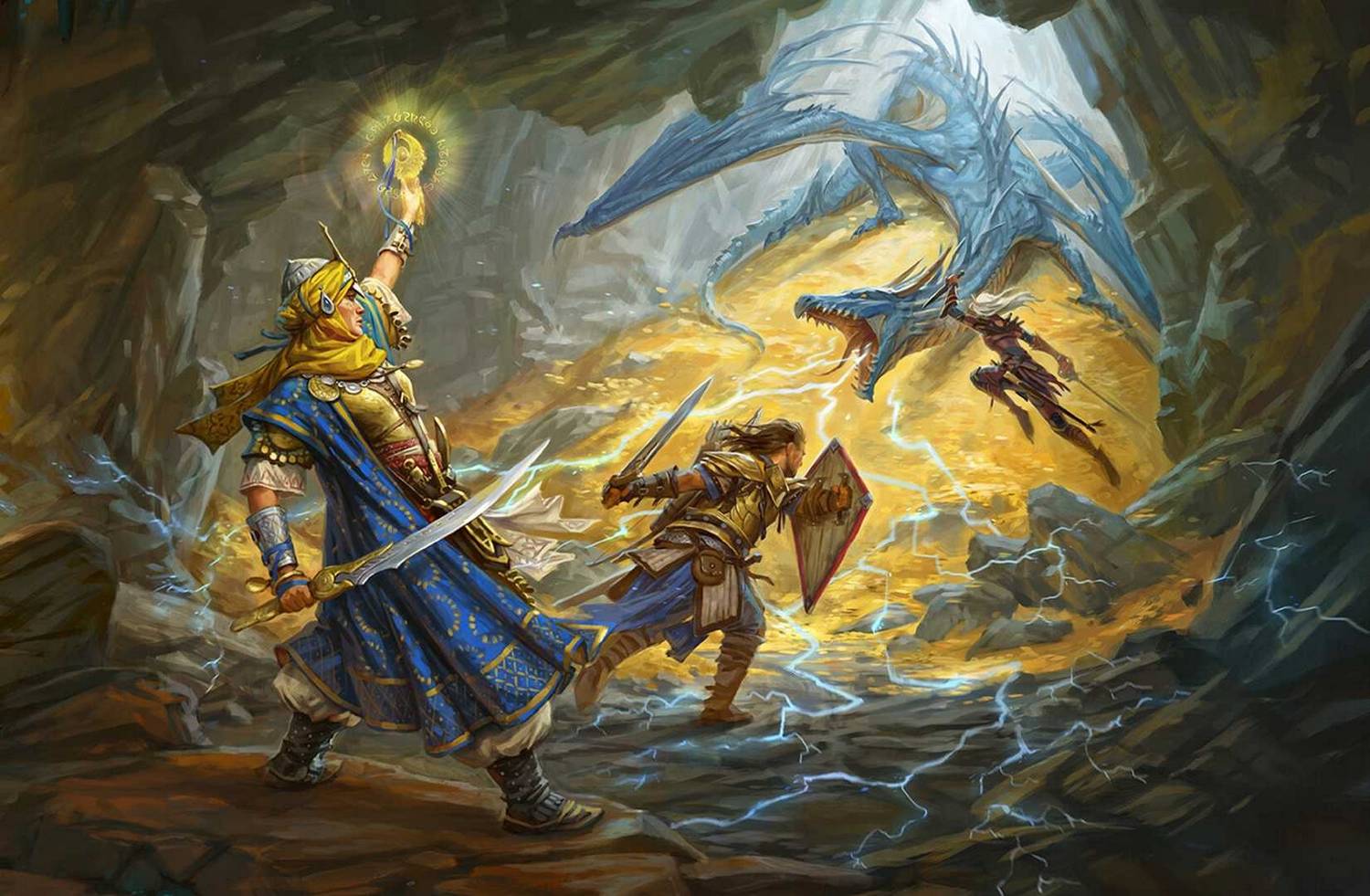The Golden Rule of D&D: A Dungeon Master’s Confession on How Forgetting the ‘Yes, And’ Almost Cost Me a Player
Popular Now
 Fall Guys
Fall Guys
 League of Legends
League of Legends
 BeamNG.drive
BeamNG.drive
 Minecraft
Minecraft
 Valorant
Valorant
 Black Myth: Wukong
Black Myth: Wukong
 Free Fire Max
Free Fire Max
 The Legend of Zelda
The Legend of Zelda
 Grand Theft Auto V
Grand Theft Auto V
 Free Fire
Free Fire 
Every Dungeon Master has a story about a session that went sideways, a moment where a simple mistake nearly derailed the entire campaign. For me, that moment came during a high-stakes encounter, a climax I had meticulously planned for months. In my obsession with the narrative I had built, I forgot the single most important rule of being a good DM: the principle of “Yes, And.” This lapse in judgment not only brought the game to a grinding halt but also risked alienating a key player and potentially losing them from the group for good. This is a lesson on why even the most seasoned DMs need to listen to their players and be willing to throw out their own script for the good of the game.
 The Betrayal of a Carefully Crafted Plan
The Betrayal of a Carefully Crafted Plan
My campaign, a long-running urban fantasy story, had a major villain reveal planned for the final act. The party was cornered by what they believed to be a powerful crime lord, a figure they had been hunting for months. My plan was simple: the crime lord would reveal his true nature as a high-level lich, a powerful undead spellcaster. I had prepared an epic monologue, a boss fight with multiple phases, and a meticulously mapped-out lair filled with traps and minions.
However, one of my players, a cunning rogue named Elara, had a different idea. After a tense exchange, she didn’t attack or try to escape. Instead, she pointed to a seemingly innocuous detail on the boss’s desk—a small, intricate jade figurine. “I’d like to make a Perception check,” she said, “I think that’s the source of his power.”
My mind raced. I knew the figurine was just set dressing, a detail to make the room feel more lived-in. In my head, I had a mental checklist of events that needed to happen: monologue, transformation, combat. Elara’s idea didn’t fit into my pre-planned sequence. So, instead of embracing her theory, I made a grave mistake. “You can make a check,” I replied, “but it’s just a piece of art. It has no special properties.”
- The DM’s Trap: Being too attached to a pre-written narrative can blind a DM to the incredible ideas and creative solutions offered by their players.
- Player Investment: When players invest in the world and its details, they expect their actions to have consequences and their ideas to be heard.
 The Moment of Truth: From a “No” to a “Yes, And”
The Moment of Truth: From a “No” to a “Yes, And”
The look on Elara’s face was one of instant disappointment. The air in the room became tense. She had spent a significant portion of the session roleplaying this idea, theorizing, and looking for clues, and with a single sentence, I had completely invalidated her efforts. She leaned back in her chair and just said, “Oh. Okay, then,” in a tone that was a mix of resignation and frustration. I could see her disengaging, her interest visibly fading from the game. It was a wake-up call.
I knew I had messed up. I paused the game. “Hold on,” I said. “I’m sorry. That was the wrong call.” I looked at her. “Elara, you are right. You have a keen eye. The figurine is not just a piece of art. What do you do with this new information?”
Her face lit up. She made a second check and, with my newfound willingness to improvise, I described a subtle magical aura she could now sense around the object. She then took an action to try and shatter it. I ruled that doing so would significantly weaken the boss, turning what was supposed to be a difficult encounter into a more manageable, and far more memorable, battle. The rest of the session was a blast. The players felt empowered, Elara felt validated, and the victory was truly earned. The villain’s reveal still happened, but it was on their terms, not mine.
The golden rule of “Yes, And” in improv theater is a cornerstone of good DMing. It means accepting your players’ ideas and building upon them, rather than shutting them down. It’s about being a facilitator of a shared story, not a dictator of a pre-written script. That night, I learned that my job wasn’t to tell a story to my players, but to tell a story with them. It’s a lesson that saved a player and, I believe, made me a much better Dungeon Master.









 The Betrayal of a Carefully Crafted Plan
The Betrayal of a Carefully Crafted Plan The Moment of Truth: From a “No” to a “Yes, And”
The Moment of Truth: From a “No” to a “Yes, And”